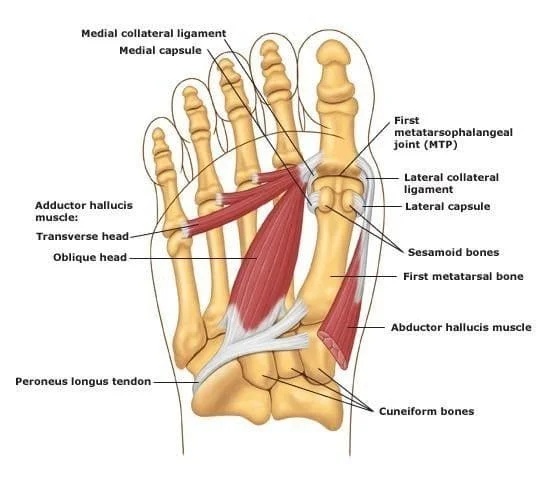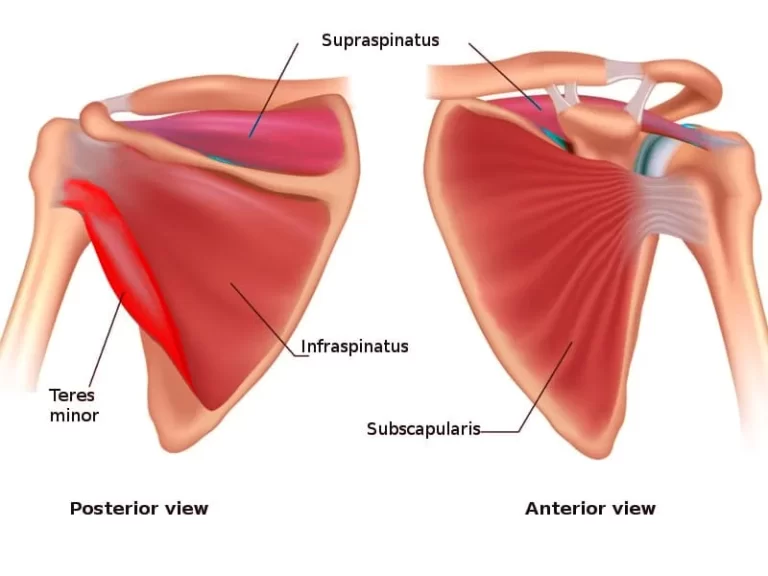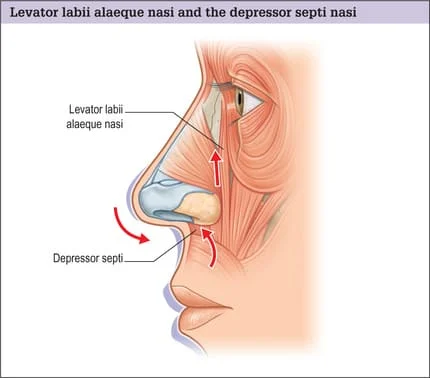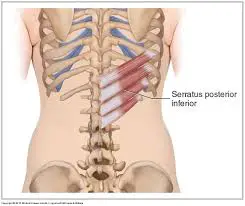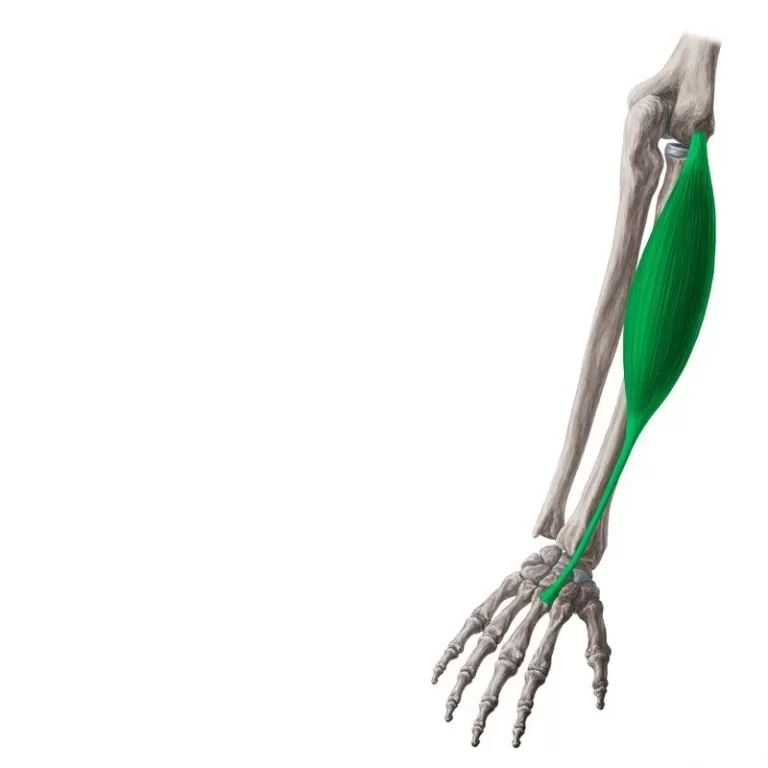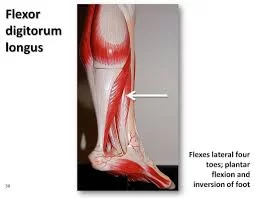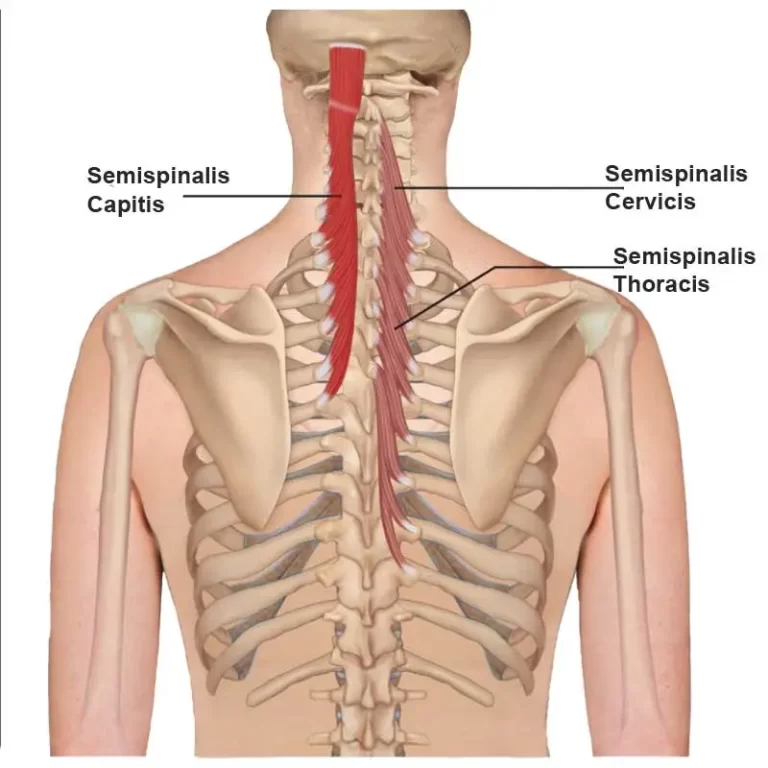Adductor Hallucis Muscle
Table of Contents
Adductor Hallucis Muscle Anatomy
Adductor hallucis muscle arises by two heads—oblique and transverse and is responsible for adducting the big toe.
Additionally, there are four horizontal layers of foot muscles, ranging from superficial to deep. Adductor hallucis, flexor hallucis brevis, and flexor digiti minimi brevis make up the third layer of plantar foot muscles in that categorization.
Origin:
it arises by two heads:
- the oblique head is large and arises from the bases of the 2nd, 3rd, and 4th metatarsals and from the sheath of the tendon of the peroneus longus.
- the transverse head is small and arises from the deep metatarsal ligament and the plantar ligaments of the metatarsophalangeal joints of the 3rd, 4th, and 5th toes.
Insertion:
on the lateral side of the base of the proximal phalanx of the big toe, in common with the lateral tendon of the flexor hallucis brevis.
Nerve supply:
Deep branch of the lateral plantar nerve.
Blood Supply
The posterior tibial artery and its branches provide this muscle with its primary blood supply;
- the medial plantar artery’s deep branches
- Plantar metatarsal arteries 1-4, deep plantar arch, and lateral plantar artery and its branches
Action:
- Adductor of the big toe.
- Maintain transverse arches of the foot.

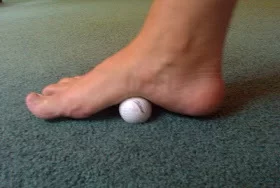
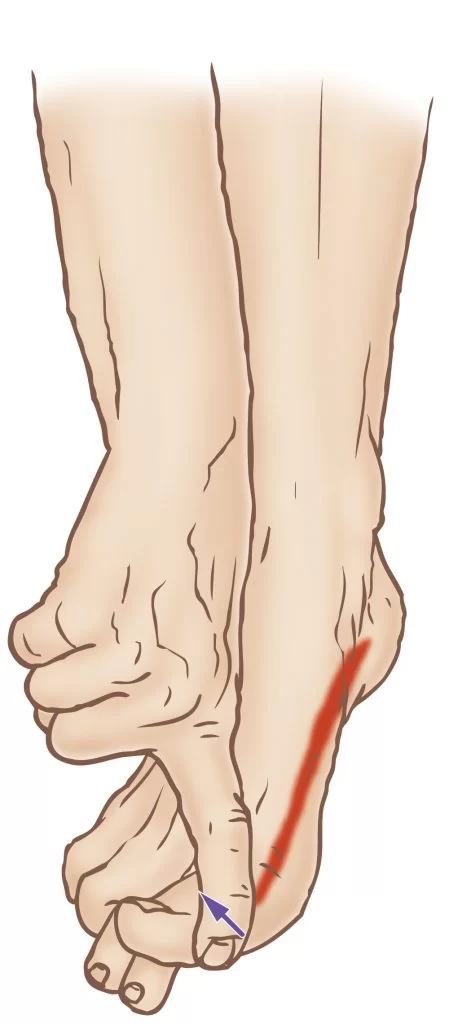
Function of Adductor Hallucis Muscle
The first metatarsophalangeal joint is the site of two movements of the adductor hallucis muscle:
- The great toe is brought closer to the midline of the foot by this adduction.
- It flexes the great toe in conjunction with the flexor hallucis longus.
- In the gait cycle’s terminal stance phase, these movements are crucial. The adductor hallucis strengthens the forefoot as the center of gravity for the body weight prior to the heel lifting up by flexing and adducting the big toe. Furthermore, because of its transverse head’s horizontal orientation, it fixes the forefoot and stabilizes the foot arches.
Muscle Relations
This muscle is located in the foot’s midfoot compartment. The tendons of the flexor digitorum longus, flexor digitorum brevis, and plantar interossei muscles are located plantar (inferior) to it. The flexor hallucis brevis is located proximally and medially to the area of the muscle.
The dorsal (superior) surface of the oblique head of the adductor hallucis is crossed by the deep branches of the lateral plantar nerve and the deep plantar arterial arch. The transverse head’s dorsal surface is crossed by the plantar metatarsal arteries in turn. The plantar surfaces of both heads are crossed by the correct plantar digital nerves.
Assessment
Testing the adductor hallucis muscle involves restricting the first digit’s flexion and adduction.
Clinical Importance
It provides support for the foot’s longitudinal and transverse arches. It is an essential intrinsic foot muscle.
Hallux valgus abnormalities may be exacerbated by the adductor hallucis because of the drag on the lateral portion of the first finger. According to reports from surgeons, hallux varus can result after a complete surgical release of the adductor hallucis’ distal tendon during bunionectomies.
Although rare, a traumatic rupture of the adductor hallucis can result in abnormalities of the hallux varus. In a case study of a 33-year-old man who suffered a traumatic rupture of his adductor hallucis tendon while rotating barefoot, Barp et al. (2018) found favourable surgical outcomes. There is a lack of evidence about alternative therapies for adductor hallucis.
FAQ
The foot’s intrinsic muscle is the adductor hallucis. It has two heads: oblique and transverse, and it is found in the foot’s third layer of plantar muscle.
Originating from the bases of the second, third, and fourth metatarsals is the oblique head.
The tibial nerve gives rise to the deep branch of the lateral plantar nerve (S2, S3), which innervates the adductor hallucis.
By adducting and flexing the great toe (hallux), the adductor hallucis muscle facilitates walking. Additionally, it helps to preserve the foot’s longitudinal and transverse arches.

